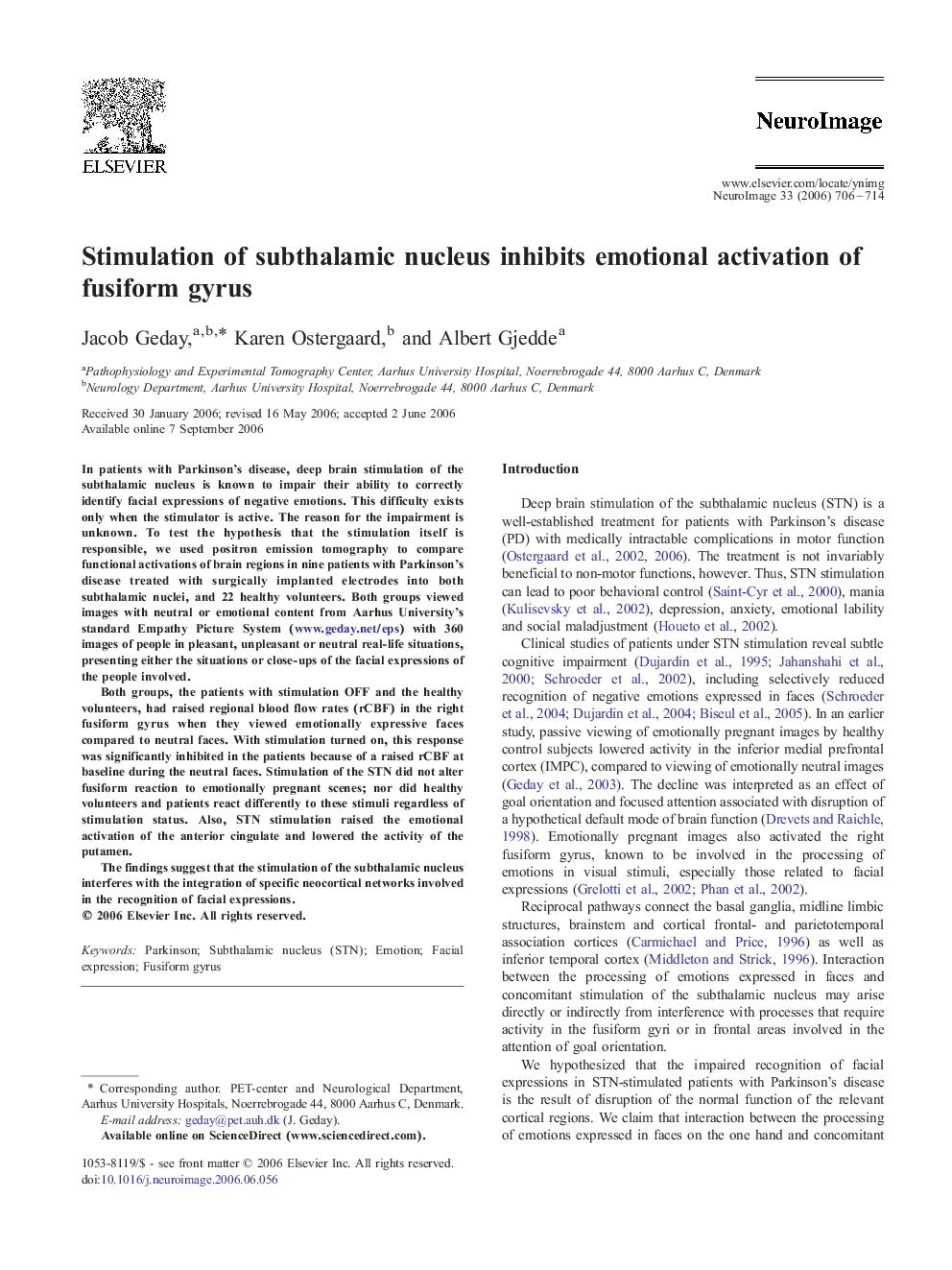| Article ID | Journal | Published Year | Pages | File Type |
|---|---|---|---|---|
| 3074467 | NeuroImage | 2006 | 9 Pages |
In patients with Parkinson’s disease, deep brain stimulation of the subthalamic nucleus is known to impair their ability to correctly identify facial expressions of negative emotions. This difficulty exists only when the stimulator is active. The reason for the impairment is unknown. To test the hypothesis that the stimulation itself is responsible, we used positron emission tomography to compare functional activations of brain regions in nine patients with Parkinson’s disease treated with surgically implanted electrodes into both subthalamic nuclei, and 22 healthy volunteers. Both groups viewed images with neutral or emotional content from Aarhus University’s standard Empathy Picture System (www.geday.net/eps) with 360 images of people in pleasant, unpleasant or neutral real-life situations, presenting either the situations or close-ups of the facial expressions of the people involved.Both groups, the patients with stimulation OFF and the healthy volunteers, had raised regional blood flow rates (rCBF) in the right fusiform gyrus when they viewed emotionally expressive faces compared to neutral faces. With stimulation turned on, this response was significantly inhibited in the patients because of a raised rCBF at baseline during the neutral faces. Stimulation of the STN did not alter fusiform reaction to emotionally pregnant scenes; nor did healthy volunteers and patients react differently to these stimuli regardless of stimulation status. Also, STN stimulation raised the emotional activation of the anterior cingulate and lowered the activity of the putamen.The findings suggest that the stimulation of the subthalamic nucleus interferes with the integration of specific neocortical networks involved in the recognition of facial expressions.
